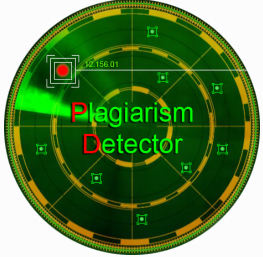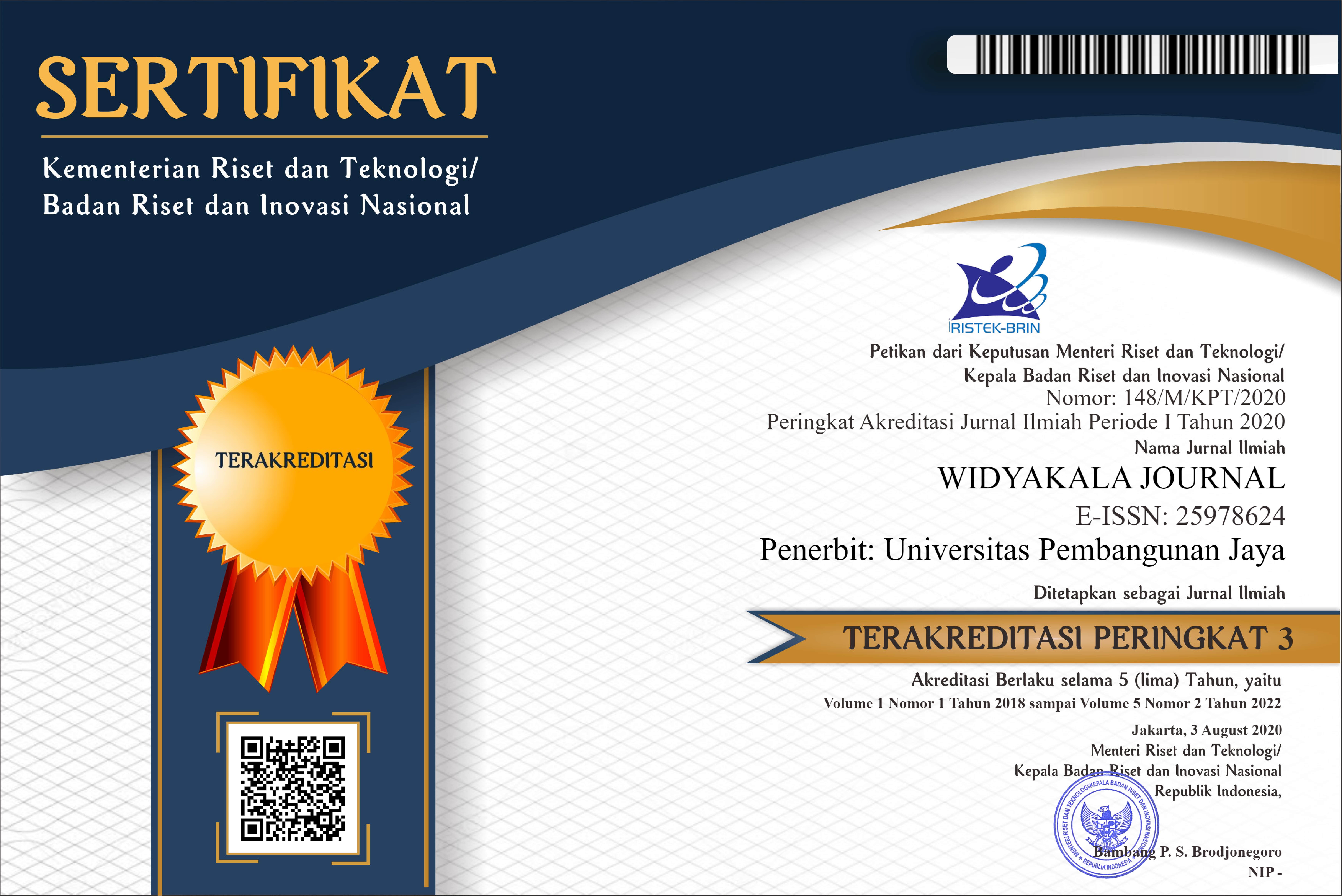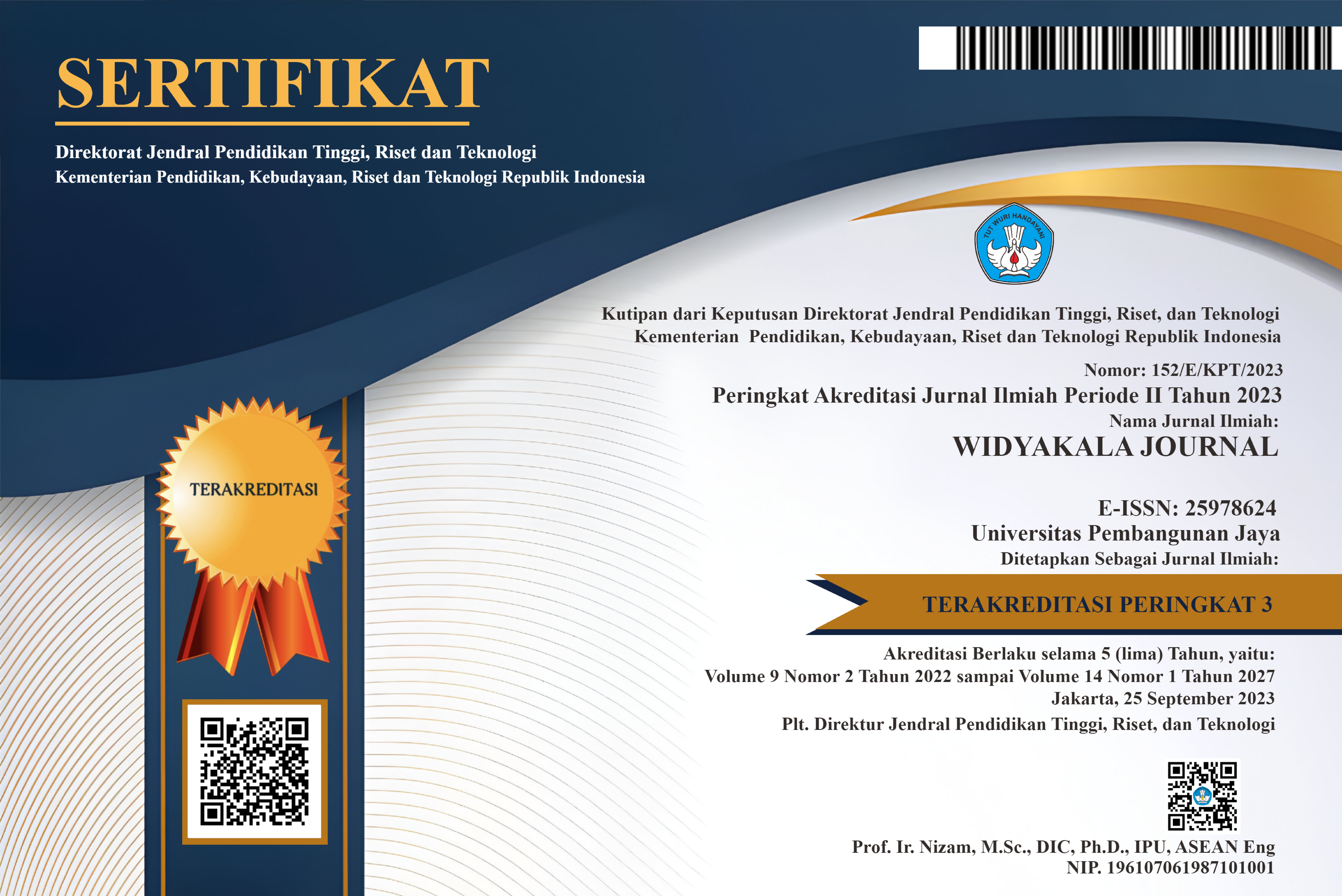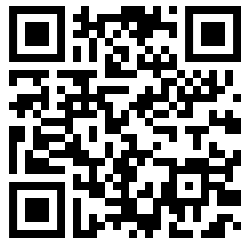Updated, March 2025
Non Binary and Androgynous Gender Representation of TikTok Influencers in the Digital Era
Abstract
In the digital era, social media such as TikTok, Instagram, and Twitter have become public spaces that facilitate more unrestrained self-expression for Indonesian people. TikTok in particular is an essential platform for non-binary gender individuals and androgynous influencers in shaping identities creatively and performatively. This study aims to analyze the role of TikTok in the construction and representation of non-binary and androgynous gender identities, including ethical challenges as well as emerging audience responses. The research employs qualitative methods, analyzing video content, comments, and community interaction. The results show that TikTok facilitates gender expression and supports online community solidarity, although it is still faced with public bias, stereotypes, and ethical dilemmas around representation. TikTok also contributes significantly to building and affirming non-normative gender identities, but ethical attention is needed to ensure that diversity still respects the social value of society.
Keywords
Full Text:
PDFReferences
Anderson, K.E. (2020). Getting acquainted with social networks and apps: it is time to talk about TikTok, Library Hi Tech News, 37(4), 7-12. https://doiorg.unslib.idm.oclc.org/10.1108/LHTN-01-2020-0001
Acar, S. C. (2021). An investigation into gender representations in an english coursebook. Focus on ELT Journal. https://doi.org/10.14744/felt.2021.3.2.4
Buss, J., Le, H., & Haimson, O. L. (2021). Transgender identity management across social media platforms. Media, Culture &Amp; Society, 44(1), 22-38. https://doi.org/10.1177/01634437211027106
Buttler, J. (1990). Variaciones sobre sexo y género. Beauvoir, Wittig y Foucault. En: Benhabib, S., Cornella, D. Teoría feminista y teoría crítica. Valencia: Generalita valenciana.
Carp, T. (2025). Reintegrating platonic intimacy: a literary and interdisciplinary vision for healing human fragmentation. https://doi.org/10.20944/preprints202505.0837.v7
Coghlan, J. (2024). The british royals in australia. M/C Journal, 27(1). https://doi.org/10.5204/mcj.3025
Demartoto, A. (2020). The representation of hybrid identity through performance and symbol of transgender santri resistance at al-fatah islamic boarding school of yogyakarta, indonesia. Society, 8(1), 147-162. https://doi.org/10.33019/society.v8i1.167
Ess, C. (2017). Digital Media Ethics. In Oxford Research Encyclopedia of Communication. Oxford University Press. https://doi.org/10.1093/acrefore/9780190228613.013.508
Fitria, V., Mardiani, D. P., & Aderibigbe, A. (2024). The public perceptions of transgender identity as 'the other' in social media. Jurnal Riset Komunikasi, 7(1), 72-85. https://doi.org/10.38194/jurkom.v7i1.990
Githapradana, D.M.W. (2022). Aesthetics and symbolic meaning of Androgynous and Co-ed style trends in men’s Fashion. Humaniora, 13(1), 23-32. https://doi.org/10.21512/humaniora.v13i1.7378
Harnish, D. (2021). Tolerance of ambiguity: negotiating religion and sustaining the lingsar festival and its performing arts in lombok, indonesia. Religions, 12(8), 626. https://doi.org/10.3390/rel12080626
Jan, A. and Rahman, M. (2022). Linguistic representation of gender from essentialist to poststructuralist perspective in the cholistan trilogy: a feminist critical discourse analysis. Journal of Humanities, Social and Management Sciences (JHSMS), 3(1), 377-386. https://doi.org/10.47264/idea.jhsms/3.1.33
Khair, O. I. and Syafri, W. (2023). The role of ethics in decision making by the constitutional court on the age limit for presidential and vice presidential candidates. Aristo, 12(1), 297-313. https://doi.org/10.24269/ars.v12i1.8189
Laid, N., Singh, N., Kern, T., Bowers, O., Ali, S., Nelson, N., dan Mahmoud, M. (2022). Currenct Ethical Issues in Social Media. https://www.researchgate.net/publication/362206080_Current_Ethical_Issues_in_Social_Media
Manning, J., Asante, G., Huerta Moreno, L., Johnson, R., LeMaster, B., Li, Y., … Young, S. (2020). Queering communication studies: A journal of applied communication research forum. Journal of Applied Communication Research, 48(4), 413–437. https://doi.org/10.1080/00909882.2020.1789197
Nairn, A. and Piatti‐Farnell, L. (2023). The power of chaos. M/C Journal, 26(5). https://doi.org/10.5204/mcj.3012
Salih, Sara. 20006. “3 On Judith Butler and Performativity”, Diakses di https://api.semanticscholar.org/CorpusID:40092292 (3 Juni 2024)
Santoniccolo, F., Trombetta, T., Paradiso, M., & Rollè, L. (2023). Gender and media representations: a review of the literature on gender stereotypes, objectification and sexualization. International Journal of Environmental Research and Public Health, 20(10), 5770. https://doi.org/10.3390/ijerph20105770
Sharabati, A. A., Al-Haddad, S., Khasawneh, M. H. A., Nababteh, N., Mohammad, M., & Ghoush, Q. A. (2022). The impact of tiktok user satisfaction on continuous intention to use the application. Journal of Open Innovation: Technology, Market, and Complexity, 8(3), 125. https://doi.org/10.3390/joitmc8030125
Smith, A. E., Zlatevska, N., Chowdhury, R. M. M. I., & Belli, A. (2023). A meta-analytical assessment of the effect of deontological evaluations and teleological evaluations on ethical judgments/intentions. Journal of Business Ethics, 188(3), 553-588. https://doi.org/10.1007/s10551-022-05311-x
Susylowati, E. and Wisudawanto, R. (2020). Pilihan kode santri dalam komunikasi di media sosial. Kelasa, 15(1), 115-127. https://doi.org/10.26499/kelasa.v15i1.89
Ulla, M., Lemana, H., & Kohnke, L. (2024). Unveiling the tiktok teacher: the construction of teacher identity in the digital spotlight. Journal of Interactive Media in Education, 2024(1). https://doi.org/10.5334/jime.845
Wijanarko, M. F., & Madaniyyah, F. (2025). Analisis Performativitas Gender Representasi Wanita Independen Modern. Iuris Studia: Jurnal Kajian Hukum, 6(2), 388-396. https://doi.org/10.55357/is.v6i2.912
Wulandari, A., Mulyana, D., Hadisiwi, P., & Rizal, E. (2025). Negotiating identity through language: the meaning of javanese speech levels among teenagers in yogyakarta, indonesia. International Journal of Innovative Research and Scientific Studies, 8(2), 2022-2032. https://doi.org/10.53894/ijirss.v8i2.5593
Yin, J. (2025). From Connection to Isolation: The Role of TikTok Algorithmic Personalization in Computational Media and Cross-cultural Communication. Communications in Humanities Research, 61(1), 44–52. https://doi.org/10.54254/2753-7064/2025.20620
DOI: https://doi.org/10.36262/widyakala.v12i2.1524
Refbacks
- There are currently no refbacks.
Copyright (c) 2025 WIDYAKALA JOURNAL : JOURNAL OF PEMBANGUNAN JAYA UNIVERSITY

This work is licensed under a Creative Commons Attribution-ShareAlike 4.0 International License.
Redaksi Jurnal Widyakala
Lembaga Penelitian dan Pengabdian Kepada Masyarakat (LP2M)
Universitas Pembangunan Jaya
Jalan Cendrawasih Raya Blok B7/P, Sawah Baru, Ciputat, 15413
Telp : 021-7455555 ext 1311
widyakala.journal@upj.ac.id


















